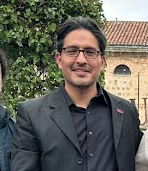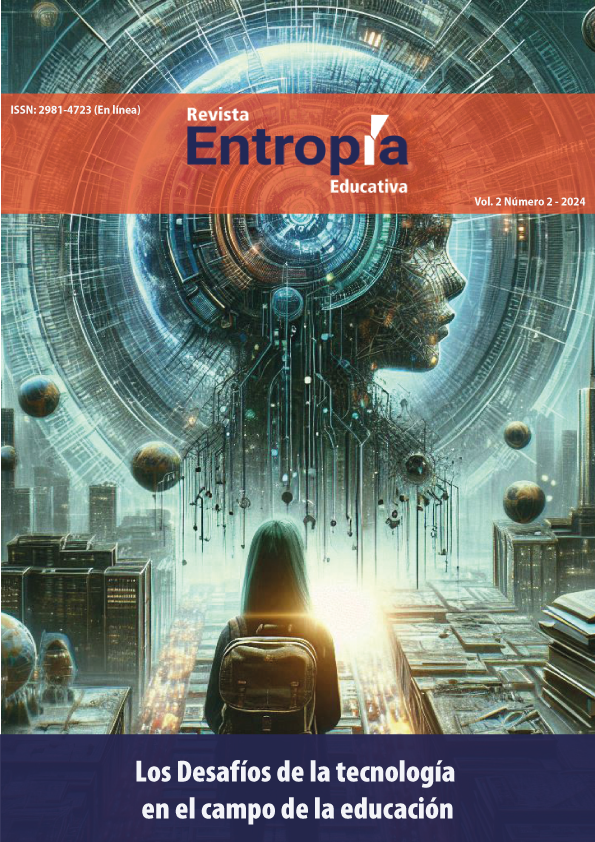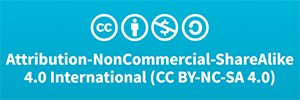
ISSN: 2981-4723 (En línea)

Investigación
Impacto de la Metodología “Aprendizaje Colaborativo Internacional en Línea” (COIL) en el Aprendizaje de Capacitancia en Estudiantes de Ingeniería picture_as_pdf
Impact of 'Collaborative Online International Learning' (COIL) on the Learning of Capacitance in Engineering Students
Kim Alejandro Soriano Jiménez
ksoriano@une.edu.mx
https://0009-0004-7128-3439


Resumen
El auge de la educación transnacional y los avances tecnológicos han significado un despunte en el intercambio virtual (VE, por sus siglas en inglés) en general y en el aprendizaje colaborativo internacional en línea (COIL, por sus siglas en inglés) en las instituciones de educación superior alrededor del mundo. Sin embargo, en el campo de Physics Education Research (PER), parece existir una brecha en la literatura con relación a la aplicación de VE y COIL. Esta investigación tiene como propósito describir el estado del arte COIL en el campo de PER y a su vez analizar el impacto de COIL en el aprendizaje de un tema de física. Así mismo, al utilizar una metodología de investigación mixta, esta investigación intenta medir cuatro dimensiones de la inteligencia cultural de los participantes en un proyecto COIL.
Palabras clave: Intercambio virtual, COIL, Physics Eduaction Research (PER), Capacitancia, Educación Transnacional, Internacionalización, VE
Abstract
The rise of transnational education and technological advancements have led to a surge in virtual exchange (VE) in general and in Collaborative Online International Learning (COIL) within higher education institutions worldwide. However, in the field of Physics Education Research (PER), there appears to be a gap in the literature regarding the application of VE and COIL. This research aims to describe the state of the art of COIL in the field of PER and to analyze the impact of COIL on learning a physics topic. Furthermore, by employing a mixed-methods research approach, this study seeks to measure four dimensions of cultural intelligence among participants in a COIL project.
keyWords : Virtual Exchange (VE), COIL, Physics Education Research (PER), Capacitance, Transnational Education, Internationalization
-
Referencias
Acevedo, D., Torres, J. D., & Tirado, D. F. (2015). Análisis de los Hábitos de Estudio y Motivación para el Aprendizaje a Distancia en Alumnos de Ingeniería de Sistemas de la Universidad de Cartagena (Colombia). Formación Universitaria, 8(5), 59-66.
Ang, S., van Dyne, L., Koh, C., Ng, K. Y., Templer, K. J., Tay, C., & Chandrasekar, N. A. (2007). Cultural intelligence: Its measurement and effects on cultural judgment and decision making, cultural adaptation and task performance. Management and Organization Review, 3, 335–371.
https://doi.org/10.1111/j.1740-8784.2007.00082.x
Angulo-Vilca, P. E. (2021). El aprendizaje colaborativo virtual para la enseñanza de la matemática. Dominio De Las Ciencias, 7(1), 253–267.
https://doi.org/10.23857/dc.v7i1.1703
Braun, V., & Clarke, V. (2006). Using thematic analysis in psychology. Qualitative Research in Psychology, 3(2), 77–101.
https://doi.org/10.1191/1478088706qp063oa
Castells, M. (1996). The Rise of the Network Society: The Information Age: Economy, Society, and Culture (Vol. I). Blackwell Publishers.
Creswell, J.W. and Plano Clark, V.L. (2011). Designing and Conducting Mixed Methods Research. 2nd Edition, Sage Publications, Los Angeles.
Creswell, J. W. (2014). Research Design: Qualitative, Quantitative and Mixed Methods Approaches (4th ed.). Thousand Oaks, CA: Sage.
De Castro, A. B., Dyba, N., Cortez, E. D., & Pe Benito, G. G. (2018). Collaborative online international learning to prepare students for multicultural work environments. Nurse Educator, 44(4), E1–E5.
https://doi.org/10.1097/NNE.0000000000000609
Deardorff, D. K. (2006). Identification and assessment of intercultural competence as a student outcome of internationalization. Journal of Studies in International Education, 10(3), 241–266.
https:// doi. org/10. 1177/ 10283 15306 287002
Earley, P. C., & Ang, S. (2003). Cultural intelligence: Individual interactions across cultures. Stanford University Press.
Esche, M. (2018). Incorporating Collaborative Online International Learning (COIL) into Study Abroad Courses: A Training Design. https:// digit alcol lecti ons. sit. edu/ capst ones/ 3096
Escobar Moreno, F., Ramírez Díaz, M. H., Ruiz Mendoza, J. C. (2020, octubre-diciembre). Evaluando dinámica de fluidos vinculando un proceso. Educación Química, 31(4). DOI: http://dx.doi.org/10.22201/
Fernández, F. H., & Duarte, J. E. (2013). El aprendizaje basado en problemas como estrategia para el desarrollo de competencias específicas en estudiantes de ingeniería. Formación Universitaria, 6(5), 29-38.García-Chitiva, M. P. y Suárez Guerrero, Cristóbal. (2019). Estado de la investigación sobre la colaboración en Entornos Virtuales de Aprendizaje. Píxel- BIT Revista de Medios y Educación, 56, 169-191. http://hdl.handle.net/11162/190553
Griffiths, D. J. (David Jeffery), (2013). Introduction to electrodynamics. Boston: Pearson.
Guth, S., & Rubin, J. (2015). How to get started with COIL. In A. Moore & S. Simon (Eds.), Globally networked teaching in the humanities: Theories and practices, 15–27. Routledge, Taylor & Francis Group.
Hackett, S., Janssen, J., Beach, P., Perreault, M., Beelen, J., & van Tartwijk, J. (2023). The effectiveness of Collaborative Online International Learning (COIL) on intercultural competence development in higher education. International Journal of Educational Technology in Higher Education, 20(1), 5-21.
Katre, A. (2020). Creative economy teaching and learning—A collaborative online international learning case. International Education Studies.
https://doi. org/10.5539/ies.v13n7p145
King de Ramírez, C. (2021). Global citizenship education through collaborative online international learning in the borderlands: A case of the arizona– Sonora megaregion. Journal of Studies in International Education, 25(1) 83–99.
DOI: 10.1177/1028315319888886
Leung, K., Ang, S., & Tan, M. L. (2014). Intercultural competence. Annual Review of Organizational Psychology and Organizational Behavior, 1, 489–519.
https://doi.org/10.1146/annurev-orgpsych-031413-091229
Marcillo-Gómez, M., & Desilus, B. (2016). Collaborative online international learning experience in practice opportunities and challenges. Journal of Technology Management & Innovation, 11(1), 30–35. https://doi.org/10.4067/S0718-272420160001000 05
Matsumoto, D., & Hwang, H. C. (2013). Assessing cross-cultural competence. Journal of Cross-Cultural Psychology, 44(6), 849–873.
https://doi.org/10.1177/0022022113492891
Mundel, J. (2020). International virtual collaboration in advertising courses: Building international and intercultural skills from home. Journal of Advertising Education.
https://doi.org/10.1177 /1098048220 948522
O’Dowd, R. (2018). From telecollaboration to virtual exchange: State-of-the-art and the role of UNI Collaboration in moving forward. Journal of Virtual Exchange, 1, 1–23. https://doi. org/10.14705/rpnet.2018.jve.1
Purcell, E.М. (1965) Electricity and Magnetism. Berkeley Physics Course, Vol. 2. McGraw-Hill Book Company, New York.
Rebek, J. L., del-Corte-Lora, V., & Riauka, E. (2022). Collaborative Online International Learning (COIL) Case Study: Canadian and Spanish Classes Develop Intercultural Competencies. In Handbook of Research on Teaching Strategies for Culturally and Linguistically Diverse International Students (pp. 345–360). IGI Global.
Redish, E. F. (2005). Changing student ways of knowing: What should our students learn in a physics class. Proceedings of World View on Physics Education, 1-13.
Reyes-Cabrera, W. (2022). Gamificación y aprendizaje colaborativo en línea: un análisis de estrategias en una universidad mexicana. Alteridad, 17(1), 24-35. https://doi.org/10.17163/alt.v17n1.2022.02
Rubin, J. (2017). Embedding Collaborative Online International Learning (COIL) at Higher Education Institutions An Evolutionary Overview with Exemplars. https://studyabroad.uic.edu/wp-content/uploads/sites/256/2020/08/ Rubin-Embedding-Collaborative-Online-International-Learning at-Higher-Education-Institutions.pdf
Rubin, J., & Guth, S. (2022). The Guide to COIL Virtual Exchange. Stylus Publishing.
Stroupe, R. (2017). The Language Educator and Globalization: How Do We Best Prepare Our Learners?. Asian-Focused ELT research and practice: Voices from the far edge, 33.
SUNY COIL Center. (2020). What is COIL? https://online.suny.edu/introtocoil/suny-coil-what- is/
SurveyMonkey. (2023, Noviembre 15). Calculadora del tamaño de muestra. SurveyMonkey®. https://es.surveymonkey.com/mp/sample-size calculator/
Tippens, P. E. (2007). Física: conceptos y aplicaciones. McGraw-Hill.
Vahed, A. (2022). Factors enabling and constraining students’ collaborative online international learning experiences. Learning Environ Res 25, 895 915. https://doi.org/10.1007/s10984-021-09390-x
Van der Zee, K. I., & van Oudenhoven, J. P. (2000). The multicultural personality questionnaire: A multidimensional instrument of multicultural effectiveness. European Journal of Personality, 14(4), 291–309.
https://doi.org/10.1002/1099-0984(200007/08)14:4%3c291::AID-PER377%3e3.0.CO;2-6
West, H., Goto, K., Borja, S., Trechter, S., & Klobodu, S. (2022). Evaluation of a Collaborative Online International Learning (COIL): A food product analysis and development project. Food, Culture & Society.
https://doi.org/10.1080/15528014.2022.2069441Young, H. D., Freedman, R. A., Ford, A. L. (Albert L., Flores Flores, V. A., and Rubio Ponce, A.) (2009). Sears - Zemansky física universitaria (12a ed.). Pearson Educación de México.

Autor (es)
Kim Alejandro Soriano Jiménez
Kim Alejandro Soriano Jiménez, actual Coordinador de Internacionalización e Idiomas en la Universidad del Noreste en Tampico, México, lidera la integración de perspectivas internacionales en la educación superior. Su trabajo e investigación se centran en estudair los fenomenos educativos en enseñanza y aprendizaje de física e idiomas desde una pesrpectiva internacional y multicultural.
This work is licensed under Attribution-NonCommercial-ShareAlike 4.0 International
Buscar


Número: Vol. 3 Núm. 4 (2024)
Cita en APA 7
Soriano Jiménez, K.A. (2024). Impacto de la Metodología “Aprendizaje Colaborativo Internacional en Línea” (COIL) en el Aprendizaje de Capacitancia en Estudiantes de Ingeniería. Revista Entropía Educativa. Vol. 3 No. 4 p.33-50
Gramática, enseñanza y (r)evoluciones
Jhon Jairo Tafur Rincón
picture_as_pdf
1651 Lecturas
Pensamiento Crítico en la Era Digital: Desafíos
y Oportunidades para una Epistemología
DigitalRómulo Andrés Gallego Torres
picture_as_pdf
1085 Lecturas
Reflexiones sobre la enseñanza del proceso salud-enfermedadPaola Fernanda Rosalez - Agustín Adúriz-Bravo - Andrea Revel Chion
picture_as_pdf
676 Lecturas
Educación en derechos humanos con enfoque de género, una propuesta educativa para la construcción de una cultura para la paz en Colombia Felipe Andrés Bernal Sandoval
picture_as_pdf
485 Lecturas

